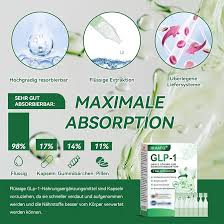The Role of GLP-1 in Diabetes Management

Introduction
GLP-1, or glucagon-like peptide-1, has emerged as a cornerstone in the management of type 2 diabetes and is gaining recognition for its role in weight loss. This peptide hormone enhances insulin secretion in response to high blood sugar levels, thereby improving glycemic control and providing a viable therapeutic option for patients managing diabetes. As obesity becomes a growing concern globally, GLP-1 medications are attracting attention for their dual benefits in managing blood glucose levels and promoting weight loss.
Current Use of GLP-1 Medications
Recent studies have shown that GLP-1 receptor agonists, such as liraglutide (Saxenda, Victoza) and semaglutide (Wegovy, Ozempic), are effective not only in reducing HbA1c levels but also in supporting significant weight reduction. According to a 2022 study published in The New England Journal of Medicine, participants using semaglutide for weight management lost, on average, 15% of their body weight over a 68-week period. As these medications continue to gain FDA approval for weight management, they present a combined approach to tackle both obesity and diabetes.
Recent Developments
As of October 2023, the market for GLP-1 medications continues to expand, with more options becoming available. Novo Nordisk, a leader in this field, has continued to innovate with the recent launch of new delivery options and formulations that increase patient compliance. Furthermore, researchers are exploring additional therapeutic uses of GLP-1, including its potential benefits in cardiovascular health and neurodegenerative diseases, signifying its far-reaching implications beyond diabetes management.
The Future of GLP-1 Therapy
Looking forward, the significance of GLP-1 medications in treating diabetes and obesity cannot be overstated. With rising obesity rates and chronic conditions, these therapies could play a key role in alleviating the burden on healthcare systems. Experts forecast that the demand for GLP-1 medications will only increase as more patients seek effective long-term solutions for weight management and diabetes control. The ongoing research and development in this field suggest a promising future where GLP-1 therapies will be integral to both individual health and public health initiatives.
Conclusion
In summary, GLP-1 medications represent a significant advancement in the treatment of type 2 diabetes and obesity, offering patients effective tools for management. As research continues to unveil the broader applications of GLP-1 therapy, the potential for improved healthcare outcomes stands clear. Patients and healthcare providers alike should stay informed on the latest developments in GLP-1 treatments to leverage their affirmative impact on health.









